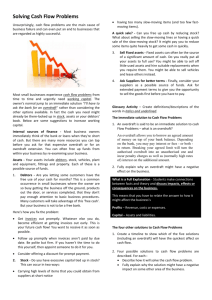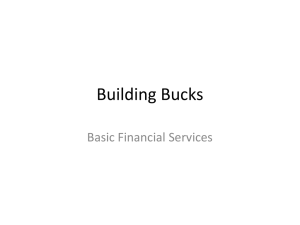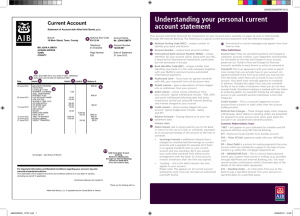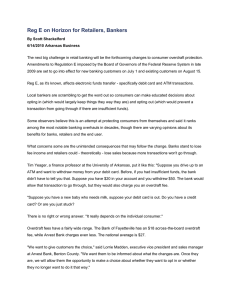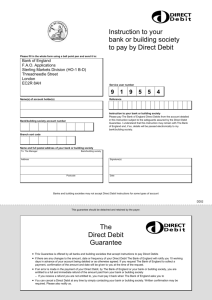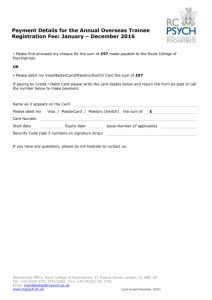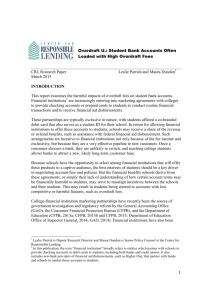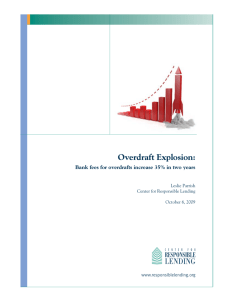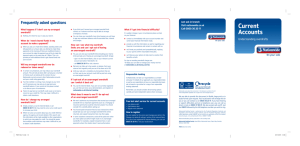How Debit Cards Can Burn Holes in Student Pockets
advertisement
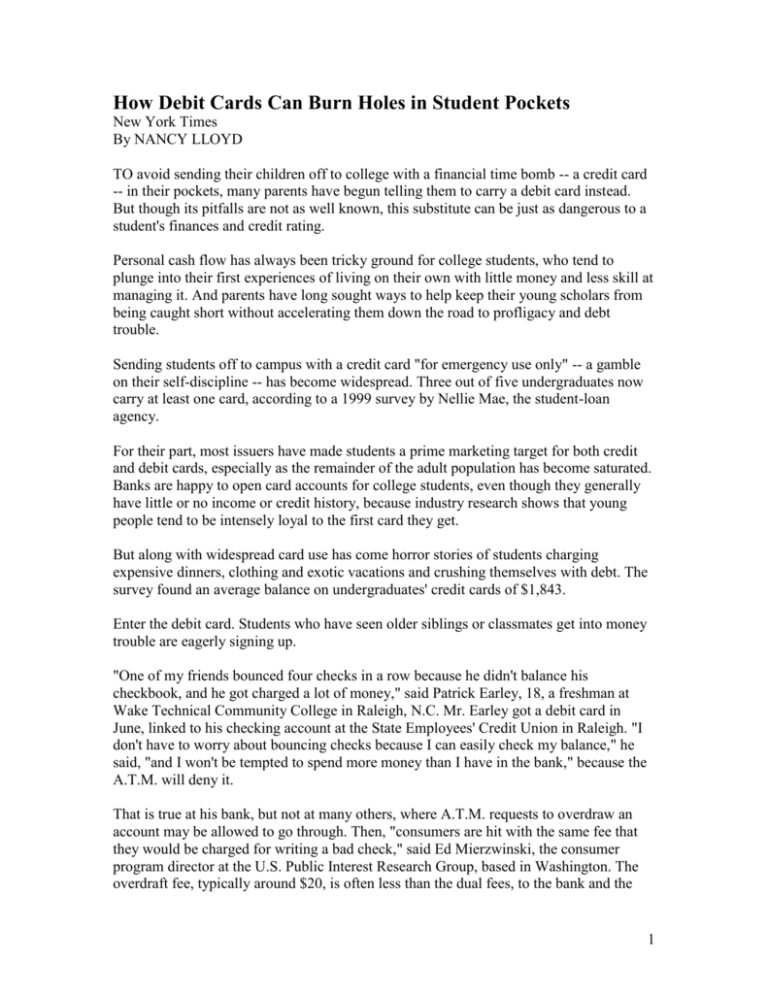
How Debit Cards Can Burn Holes in Student Pockets New York Times By NANCY LLOYD TO avoid sending their children off to college with a financial time bomb -- a credit card -- in their pockets, many parents have begun telling them to carry a debit card instead. But though its pitfalls are not as well known, this substitute can be just as dangerous to a student's finances and credit rating. Personal cash flow has always been tricky ground for college students, who tend to plunge into their first experiences of living on their own with little money and less skill at managing it. And parents have long sought ways to help keep their young scholars from being caught short without accelerating them down the road to profligacy and debt trouble. Sending students off to campus with a credit card "for emergency use only" -- a gamble on their self-discipline -- has become widespread. Three out of five undergraduates now carry at least one card, according to a 1999 survey by Nellie Mae, the student-loan agency. For their part, most issuers have made students a prime marketing target for both credit and debit cards, especially as the remainder of the adult population has become saturated. Banks are happy to open card accounts for college students, even though they generally have little or no income or credit history, because industry research shows that young people tend to be intensely loyal to the first card they get. But along with widespread card use has come horror stories of students charging expensive dinners, clothing and exotic vacations and crushing themselves with debt. The survey found an average balance on undergraduates' credit cards of $1,843. Enter the debit card. Students who have seen older siblings or classmates get into money trouble are eagerly signing up. "One of my friends bounced four checks in a row because he didn't balance his checkbook, and he got charged a lot of money," said Patrick Earley, 18, a freshman at Wake Technical Community College in Raleigh, N.C. Mr. Earley got a debit card in June, linked to his checking account at the State Employees' Credit Union in Raleigh. "I don't have to worry about bouncing checks because I can easily check my balance," he said, "and I won't be tempted to spend more money than I have in the bank," because the A.T.M. will deny it. That is true at his bank, but not at many others, where A.T.M. requests to overdraw an account may be allowed to go through. Then, "consumers are hit with the same fee that they would be charged for writing a bad check," said Ed Mierzwinski, the consumer program director at the U.S. Public Interest Research Group, based in Washington. The overdraft fee, typically around $20, is often less than the dual fees, to the bank and the 1 merchant, that the consumer would pay if a paper check were returned instead. But many consumers are not aware that a card transaction can also overdraw an account. Exacerbating the danger is the "overdraft protection" feature -- a line of credit -- offered to many debit card holders. Liana Prieto, 20, a senior at Georgetown University, said that when she opened a Citibank checking account last year, she received a $2,000 overdraft line, along with an A.T.M. card that, while not a full-blown debit card, could be used like one at some stores. "I come from a family where you don't buy things that you can't pay for," she said, "but other college students might find that $2,000 overdraft line just as tempting as a credit card with a $2,000 credit limit." Robert D. Manning, a visiting professor of sociology at Georgetown, called such overdraft lines deceptive and potentially dangerous. "Everyone thinks that debit cards are a no-lose situation," he said. "But banks are very shrewd. These kids are getting the spending power of a credit card" without violating their parents' no-credit-card rules. Ms. Prieto's mother, Mercy Prieto, who owns an employment agency in Manhattan, was aghast that students are routinely offered overdraft lines that effectively turn A.T.M. and debit cards into credit cards if their accounts run dry. "Banks are helping them get into financial trouble," she said. Mr. Earley's mother, Annemarie, was also critical of such lines. "It's misleading to financially unsophisticated teens," said Ms. Earley, a director of retail banking research at the Gartner Group in Stamford, Conn. Like other parents, she said, "I'm trying to teach my son to pay as he goes." Catherine Pulley, a spokeswoman for the American Bankers Association, denied that banks try to mislead students by offering them overdraft lines linked to debit cards. "It's the responsibility of a parent and child -- no, at 18 they're an adult -- to find the services that are right for them," she said. "If you buy a car, you're not going to buy it without testdriving and reading up on it. Banking is the same way." Though an overdraft line of credit can help avoid returned-check fees, it can nonetheless be a very expensive service, even more so than many credit cards. Depending on the bank, debit card holders who use overdraft lines may be paying much more than interest on the overdraft: they may be charged an annual or monthly fee for having such lines, even if they are never used, or they may face an "activation" or transfer fee of $3 to $10 for each use. Moreover, some banks allow use of overdraft lines only in $100 increments; overdrawing an account at such a bank by just $10 means borrowing and paying interest on $100 from the line of credit; a $101 overdraft turns into a $200 loan and so on. And many banks will not automatically pay off overdraft loans out of subsequent deposits unless the account holder takes some special action, like filling out an extra form with the deposit. Interest charges, meanwhile, can accrue long after enough money is in the account to repay the loan. 2 Ms. Pulley of the bankers association said that understanding how a bank handles overdrafts is the consumer's responsibility, and that overdraft fees are "100 percent avoidable" as long as the account holder knows the rules and balances the checkbook. "Whether you are 18 or 85, you need to know how it works and what the fees are," she said, adding that consumers who do not want an overdraft line can simply decline it. MOST debit cards are designed to look like credit cards, down to the Visa or MasterCard logo, and they are accepted by nearly all the same merchants. But debit cards typically offer students and other consumers much less protection against fraud or disputed charges than credit cards do. Julia Andrick, now 35, got her first credit card while attending Randolph-Macon College in Ashland, Va., and she knows how easy it is to rack up charges in college. "I came from an upper-middle-class family and did not understand what kind of trouble I could get into," she recalled. "My twin sister, Sera, and I would go out to dinner with friends who had no money, and charge dinner for eight on one of our cards. We figured, 'Who cares? It's just credit.' " When she graduated, she found herself without enough money to move to a new city, get an apartment and still make even minimal payments on her cards. "I called my parents in tears," she recalled. "They agreed to pay off my debt, and I would pay them back on a slower schedule than the credit card company had demanded." Would she have been better off with a debit card? She doesn't think so. "It's the same thing as a credit card and gives you the same feeling of freedom: 'If I don't have the cash, I'll just use the overdraft.' The potential problems for naive college students are the same, and the problems can fester years after you graduate." http://www.nytimes.com 3

